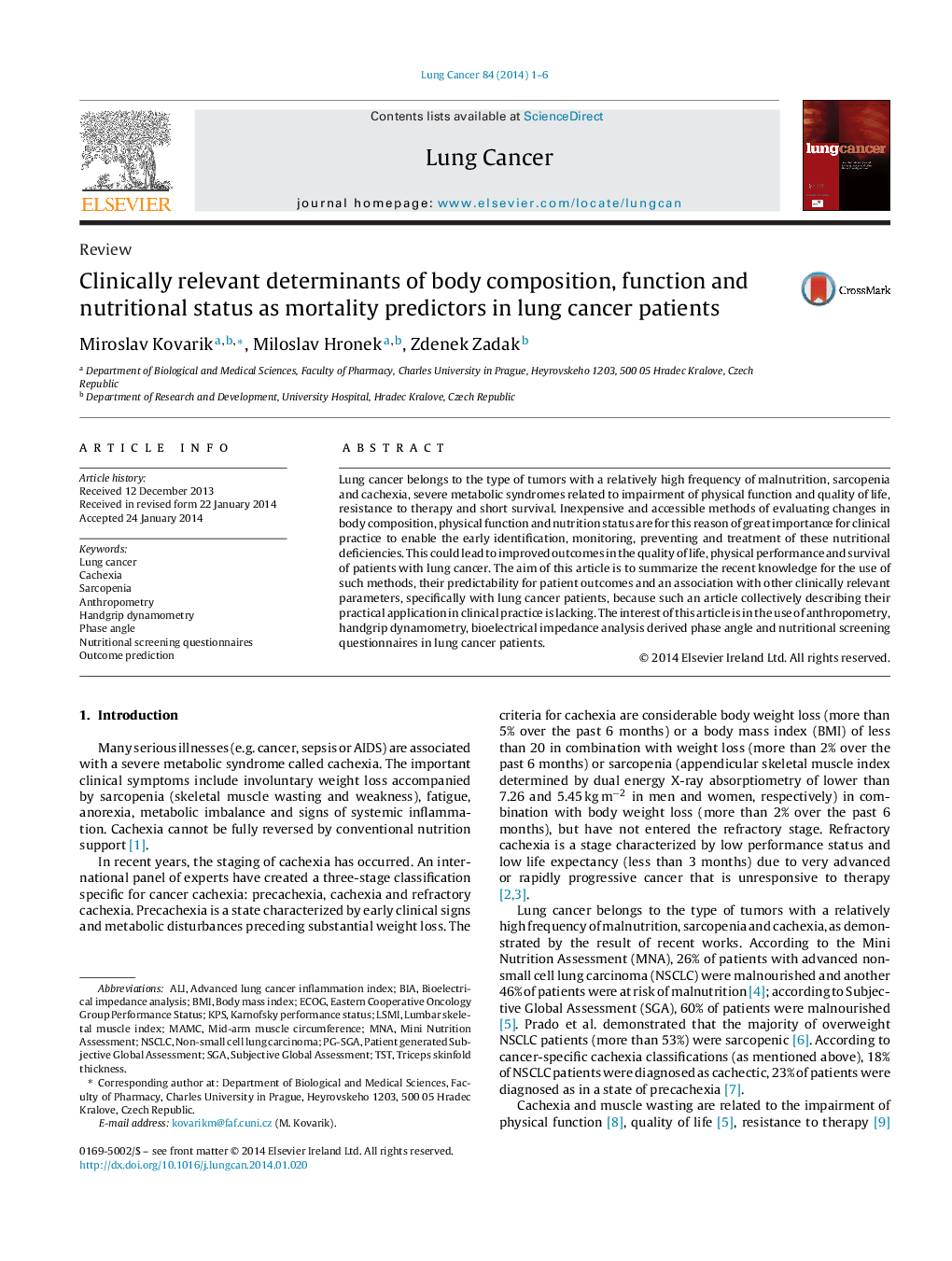| Article ID | Journal | Published Year | Pages | File Type |
|---|---|---|---|---|
| 10911123 | Lung Cancer | 2014 | 6 Pages |
Abstract
Lung cancer belongs to the type of tumors with a relatively high frequency of malnutrition, sarcopenia and cachexia, severe metabolic syndromes related to impairment of physical function and quality of life, resistance to therapy and short survival. Inexpensive and accessible methods of evaluating changes in body composition, physical function and nutrition status are for this reason of great importance for clinical practice to enable the early identification, monitoring, preventing and treatment of these nutritional deficiencies. This could lead to improved outcomes in the quality of life, physical performance and survival of patients with lung cancer. The aim of this article is to summarize the recent knowledge for the use of such methods, their predictability for patient outcomes and an association with other clinically relevant parameters, specifically with lung cancer patients, because such an article collectively describing their practical application in clinical practice is lacking. The interest of this article is in the use of anthropometry, handgrip dynamometry, bioelectrical impedance analysis derived phase angle and nutritional screening questionnaires in lung cancer patients.
Keywords
TSTPG-SGAMAMCBIATriceps skinfold thicknessKPSECoGSGAMNAAnthropometrySubjective Global AssessmentAlibioelectrical impedance analysisPhase angleLung cancerNSCLCbody mass indexBMImid-arm muscle circumferenceEastern Cooperative Oncology Group Performance StatusKarnofsky performance statusOutcome predictionnon-small cell lung carcinomaCachexiaSarcopenia
Related Topics
Life Sciences
Biochemistry, Genetics and Molecular Biology
Cancer Research
Authors
Miroslav Kovarik, Miloslav Hronek, Zdenek Zadak,
